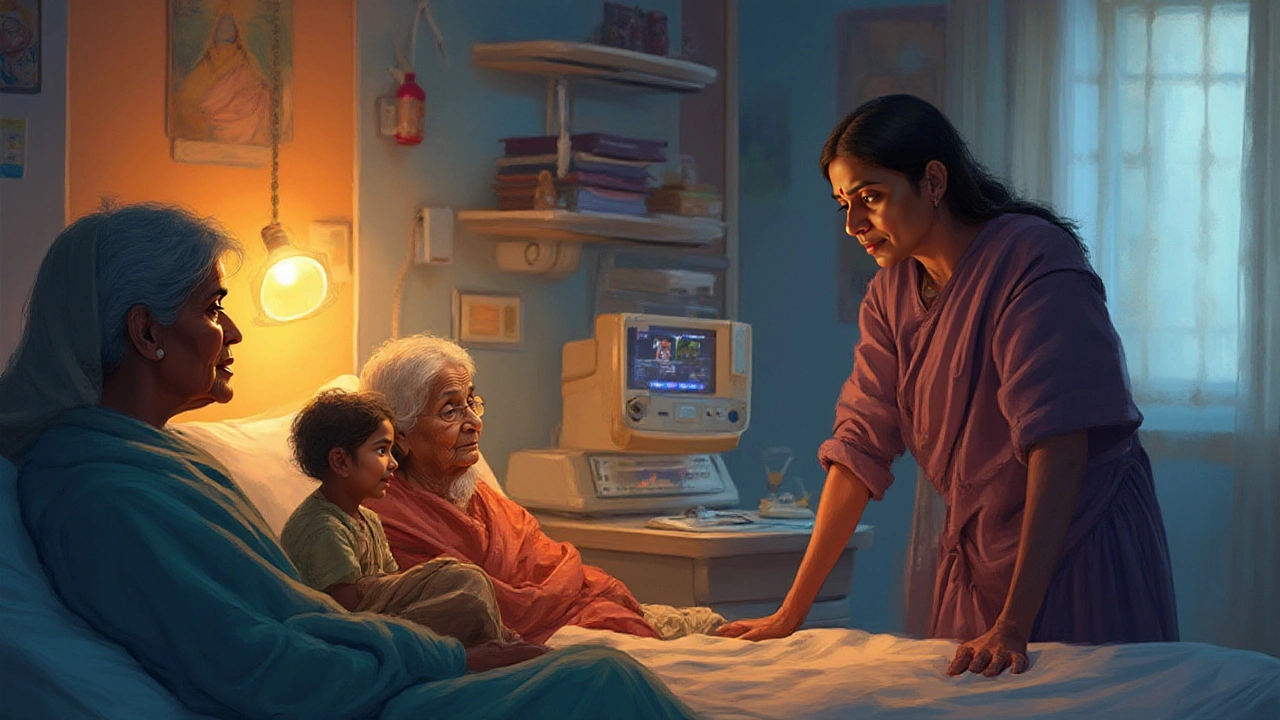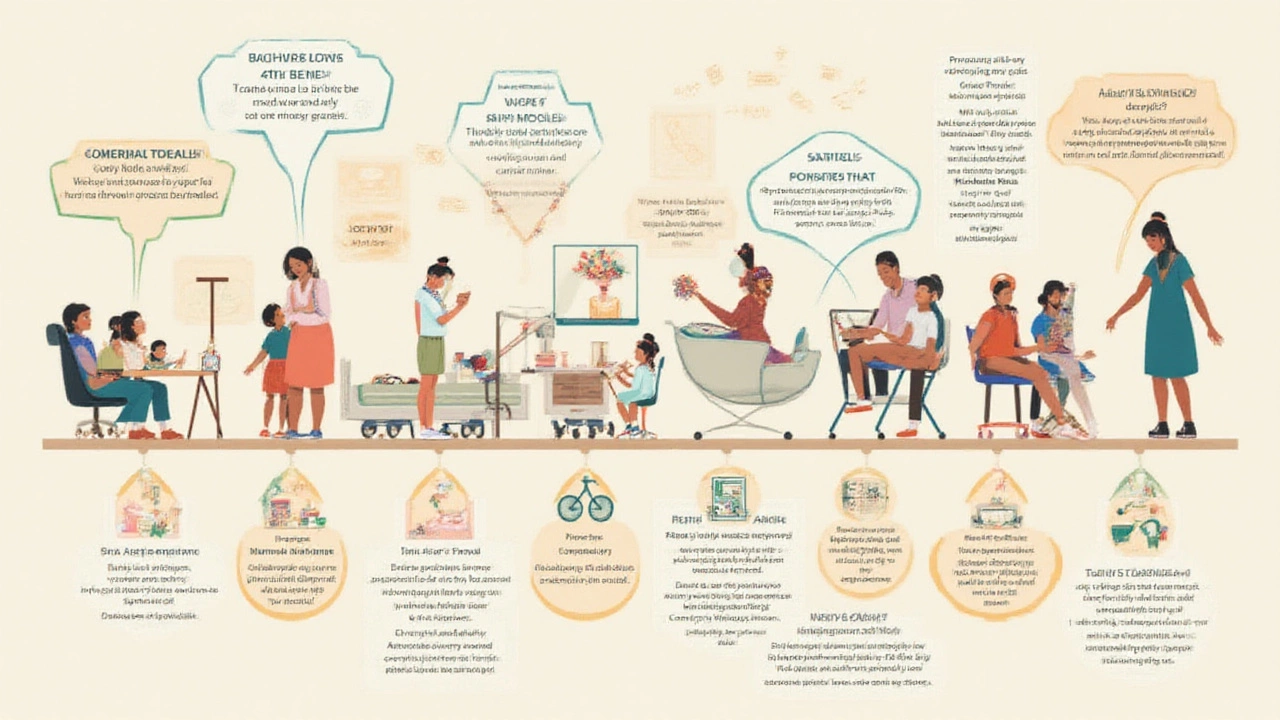When Is Cancer No Longer Curable? Signs, Stages, and Real-Life Answers
 Aug, 2 2025
Aug, 2 2025
Wake up one day with back pain you can't shake, or a cough that won't just go away, and suddenly Dr. Google turns up the word nobody ever wants to hear: cancer. For a lot of people facing a diagnosis or watching a loved one navigate the maze of treatments, one burning question sticks in everyone's mind—at what point is cancer not curable? Some folks assume cancer is either curable or it's not, but this isn't a light switch kind of deal. The real line between 'curable' and 'not curable' depends on a messy mix of science, timing, luck, and sometimes sheer stubbornness.
The Tipping Point: What Actually Makes Cancer Incurable?
With all the headlines about miracle cures and "breakthrough" drugs, it's easy to think there's a magic line where cancer goes from fixable to forever. But it's usually a whole series of tipping points, not just one. It starts with how, and where, the cancer spreads. When doctors talk about a "cure," they mean wiping every last cancer cell from your body, not just shrinking a tumor or making you feel better for a while.
Simple truth: Most cancers are curable when caught early. If you snag it before it has a chance to break out from its original "home" and roam the rest of your body, there's a good shot at a full recovery. That's why you hear so much about screening for colon, breast, and cervical cancers—they tend to hang out in one spot before going wild. But once cancer cells slip into your bloodstream or lymphatic system and start turning up in places far from where they started, that's called metastasis. That's a word that often spells trouble.
| Stage | Cure Rate (% five-year survival) | Common Example |
|---|---|---|
| Stage I | 80–99 | Early breast, colon, prostate cancers |
| Stage II | 60–85 | Localized spread within tissue |
| Stage III | 35–65 | Spread to regional lymph nodes |
| Stage IV | 5–25 | Metastatic to distant organs (e.g., liver, brain) |
When the docs say "incurable," what they usually mean is that medical science, as of now, doesn't have an answer for erasing the cancer completely—the best hope then is turning it into a chronic illness people can often live with for years. Stage IV is where this usually happens. At this stage, cancer cells have not just moved next door but have taken up residence all over town. According to the American Cancer Society, "Metastatic cancers are rarely considered curable, but some people can live for years with the right kind of treatment." The idea that 'incurable' equals 'no hope' is outdated, though—some folks with advanced cancers can live surprisingly long, full lives, thanks to better treatments and smarter drugs.
Still, even in 2025, only a handful of metastatic cancers have become long-term manageable on a big scale. The mix of factors that tip the scale from curable to incurable? Here are some big ones:
- Cancer has spread (metastasized) to vital organs, especially the brain, liver, or bones
- Stops responding to standard treatments like chemo, radiation, or targeted therapies
- Patient's overall health is too poor to handle intense treatments
- Aggressiveness: some cancers move extremely fast (like pancreatic or certain lung cancers)
- Multiple recurrences after earlier remission
Metastatic cancer doesn't always follow a script. Some folks with a handful of tiny, treatable metastases ("oligometastatic" disease) can occasionally be cured or put into long-term remission with aggressive treatments. But if cancer overruns multiple major organs, or keeps bouncing back after every treatment, "curable" starts fading into "manageable at best."

Living With Incurable Cancer: Survival, Hope, and What Really Matters
Say the "C word" is on your paperwork, and you hear the "incurable" talk from your doctor. What next? A hopeless diagnosis isn't what it used to be. Medical science isn’t perfect, but the playbook keeps growing. Tons of new drugs—think immunotherapy, targeted therapies, personalized medicine—are letting people with advanced cancers see weddings, graduations, and even grandkids. One 2023 study in the New England Journal of Medicine showed that patients with metastatic melanoma on combo immunotherapy lived more than five years in over 50% of cases, when less than 10% did two decades ago. That's nothing short of wild.
There's a real difference between "incurable" and "untreatable." Incurable means doctors don't see a way to completely erase the disease, but they can still slow it down, shrink tumors, and help with symptoms. Palliative care—which gets a bad rap for being just about comfort in dying—is often started alongside active treatment to boost quality of life, manage pain, and keep folks at home instead of in the hospital. Too many people wait until it's late and miss out on months, or even years, of feeling better than they thought possible.
Let's talk goals. With incurable cancer, the question shifts from "How do we cure this?" to "How do we make the most of life?" That might look like:
- Chasing new treatments, like clinical trials that test cutting-edge drugs
- Choosing comfort, spending more time doing the stuff that matters with the people who matter
- Managing pain and symptoms, so every day feels just a notch more normal
- Making hard calls about which treatments are worth it versus which ones just add more side effects
Some tips sound obvious but get skipped in the chaos of a tough diagnosis:
- Don't wait to talk openly with your doctor about prognosis, side effects, and options. Surprises suck when it comes to cancer.
- Keep copies of all reports, scans, and test results. It makes second opinions and new treatments a lot easier to chase down.
- Ask about genetic tests. Some "incurable" cancers flip the script when DNA testing finds a rare target that a new drug can hit.
- Leaning on support groups or trusted friends helps clear the mental fog. You're not the only one asking, "How much time do I really have?"
Here’s a bit of real talk from Dr. Siddhartha Mukherjee, Pulitzer Prize-winning author and cancer doc:
“For most cancers, early diagnosis is the best bet, but even when it’s advanced, treatment can buy both time and quality. No cancer verdict should rob you of hope or choices.”
Hope isn't just a switch you flip on or off when you hear "incurable." It's a whole scale that varies by person. Some want the longest runway, chasing every new trial. Others focus on fewer doctor visits and more time with grandkids. The key: Everything’s on your terms now.

Spotting the Signs: When Cancer Crosses the 'Not Curable' Line
Figuring out the crossing point to "not curable" is often a gut punch. Most folks won't hit Google for terms like "stage IV" until the doc brings it up. But understanding the warning signs can keep you in the driver’s seat before, during, and after diagnosis. Want the blunt facts on how doctors tell? It usually happens when cancer spreads beyond a single area or organ, or keeps coming back after increasingly harsh treatments. Here are some red flags that often show up on the radar:
- Widespread metastasis: Cancer found in multiple organs or systems (e.g., lungs, liver, bones) at diagnosis or after recurrence
- Poor performance status: The person is too weak or sick to handle tough treatments (like intense chemo or surgery)
- Lack of response: Tumor keeps growing, or new ones pop up, despite multiple lines of therapy
- Genetic resistance: Certain gene mutations make all available treatments a dead end (think KRAS in colon cancer, EGFR in lung cancer if already targeted before)
- Complications: Severe organ damage or side effects from either the cancer itself or the treatments
Doctors use a combo of imaging (MRI, CT, PET scans), blood tests (like tumor markers), and sometimes biopsies to re-stage every time you get new symptoms. At each step, the question is simple: Can all traces be wiped out, or are we looking at control, not cure?
Data still matter, even in a field that’s full of surprises. Look at this table, which shows five-year survival rates by cancer type according to the latest SEER statistics from the National Cancer Institute:
| Cancer Type | Localized (%) | Regional (%) | Distant (Metastatic) (%) |
|---|---|---|---|
| Breast | 99 | 86 | 30 |
| Colon | 91 | 72 | 13 |
| Pancreatic | 44 | 15 | 3 |
| Lung | 63 | 36 | 9 |
| Melanoma | 99 | 68 | 31 |
Still, statistics aren't destiny. Stories pour in every year about people outliving expectations, thanks to discovering the right trial or just catching the occasional medical miracle. But the honest truth, by the numbers, is that advanced-stage (metastatic) cases see a big dip in survival odds for most cancers.
None of this makes diagnosis or decisions easier. But the more you know, the more power you get over your care. A lot of patients say the scariest part is the unknown—so try to get every question answered, no matter how tough. Even after "curable" slips off the table, there's a lot of room for treatment, hope, and life on your terms.